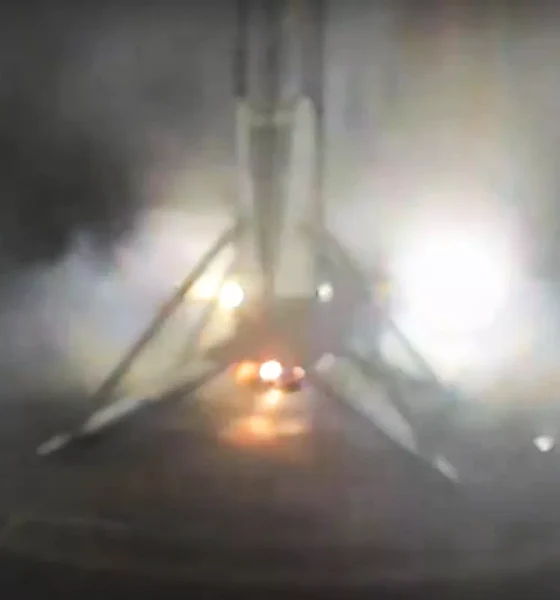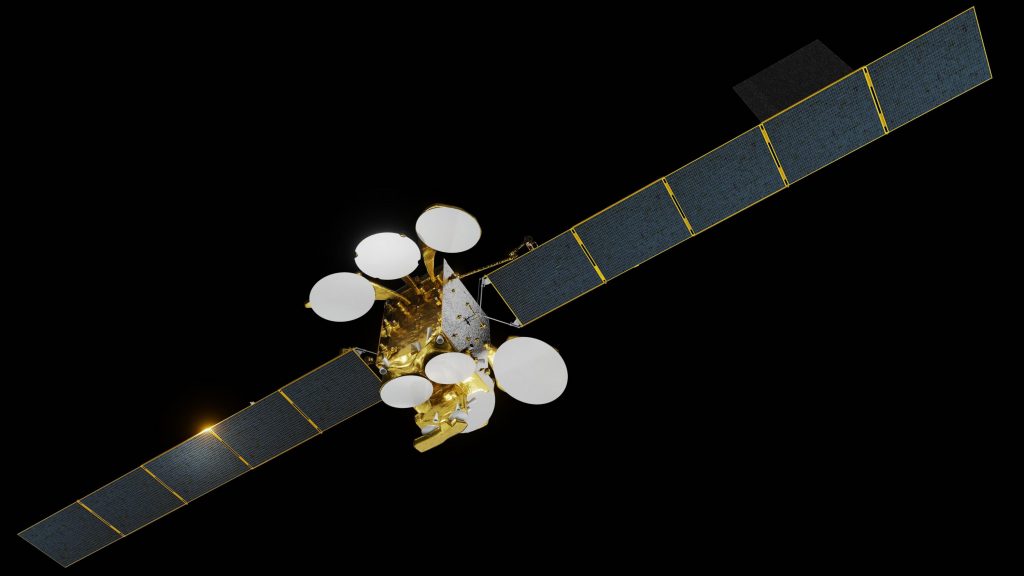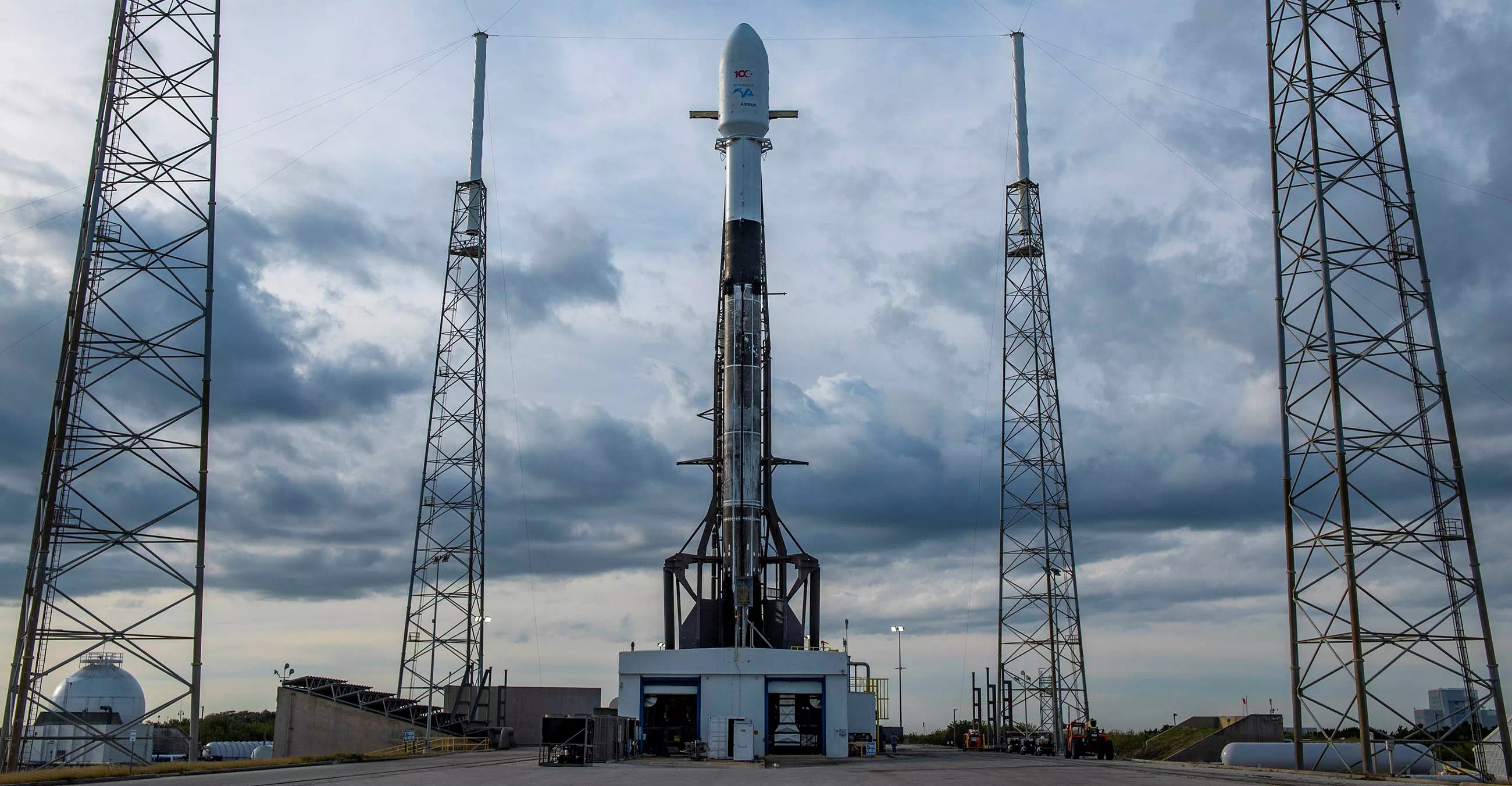

News
SpaceX Falcon 9 rocket aces first launch of dozens planned this year
A SpaceX Falcon 9 rocket has aced the first launch and landing of dozens planned by the company in 2021, kicking off what could be an unprecedentedly productive year.
Lifting off at 9:15 pm EST around 45 minutes into a four-hour window, SpaceX’s first mission of the year was tasked with delivering the ~3500 kg (7700 lb) Turksat 5A communications satellite to an elliptical geostationary transfer orbit (GTO) measuring roughly 200 km (~125 mi) to 36,000 km (22,500 mi) above the Earth’s surface.* Designed and built almost entirely by Europe’s Airbus Defence and Space for Turkey, the satellite is meant to expand and upgrade communications services over wide swaths of Africa, Europe, the Middle East, and Turkey itself.
*SpaceX actually appears to have delivered Turksat 5A to what is known as a supersynchronous GTO, meaning that the apogee (furthest point from Earth) is much higher than geostationary orbit. In the case of Turksat 5A, thanks to its relatively low launch mass, Falcon 9 was able to deploy the satellite into a healthy ~290 km by ~55,000 km (180 mi x 34,000 mi) transfer orbit. In doing so, SpaceX will have substantially cut the amount of time and/or delta V (propellant) Turksat 5A will take to circularize into its operational orbit (35,786 km x 35,786 km).
It’s believed that Turksat 5A will be used to some extent for Turkish military communications, raising controversy in light of the country’s conscious decision to directly aid the aggressor responsible for igniting the brief but bloody 2020 Nagorno-Karabakh War. Controversy aside, Turksat 5A will now spend the next several months gradually raising its perigee (the lowest point of its orbit) until the satellite arrives at an operational geostationary orbit, where its health will be verified before entering service.
Although a key ground station used for telemetry, tracking, and communications (TT&C) was down during most of the second half of the mission, Falcon 9’s autonomous upper stage performed flawlessly. The orbital vehicle confirmed the completion of a successful orbit-raise maneuver once contact was made with SpaceX’s next ground station, followed by a smooth deployment of the Turksat 5A satellite around 33 minutes after liftoff.

For Falcon 9, Turksat 5A was booster B1060’s fourth launch in six months and represented the SpaceX’s 50th booster reuse since March 2017. B1060 performed as expected throughout the launch, shutting down and separating from the second stage two and a half minutes after liftoff traveling 2.3 km/s (1.5 mi/s), coasting to an apogee well above the Karman Line (100 km/62 mi), reentering Earth’s atmosphere, and touching down on drone ship Just Read The Instructions (JRTI) after 8.5 minutes in flight.

The Turksat 5A mission also marked the second time SpaceX has used a flight-proven Falcon payload fairing on a commercial satellite launch, while it was also the first time in several months that both twin fairing recovery ships Ms Tree and Ms Chief were deployed on the same mission. SpaceX says only Ms Chief was scheduled to attempt a fairing catch, while Ms Tree would instead try to scoop its assigned half out of the Atlantic Ocean.
SpaceX has three more Falcon 9 launches scheduled this month, including its first dedicated Smallsat Program mission – known as Transporter-1 – NET January 14th and two Starlink missions – V1 L16 and V1 L17 – sometime in the second half of the month.

News
Tesla is not sparing any expense in ensuring the Cybercab is safe
Images shared by the longtime watcher showed 16 Cybercab prototypes parked near Giga Texas’ dedicated crash test facility.

The Tesla Cybercab could very well be the safest taxi on the road when it is released and deployed for public use. This was, at least, hinted at by the intensive safety tests that Tesla seems to be putting the autonomous two-seater through at its Giga Texas crash test facility.
Intensive crash tests
As per recent images from longtime Giga Texas watcher and drone operator Joe Tegtmeyer, Tesla seems to be very busy crash testing Cybercab units. Images shared by the longtime watcher showed 16 Cybercab prototypes parked near Giga Texas’ dedicated crash test facility just before the holidays.
Tegtmeyer’s aerial photos showed the prototypes clustered outside the factory’s testing building. Some uncovered Cybercabs showed notable damage and one even had its airbags engaged. With Cybercab production expected to start in about 130 days, it appears that Tesla is very busy ensuring that its autonomous two-seater ends up becoming the safest taxi on public roads.
Prioritizing safety
With no human driver controls, the Cybercab demands exceptional active and passive safety systems to protect occupants in any scenario. Considering Tesla’s reputation, it is then understandable that the company seems to be sparing no expense in ensuring that the Cybercab is as safe as possible.
Tesla’s focus on safety was recently highlighted when the Cybertruck achieved a Top Safety Pick+ rating from the Insurance Institute for Highway Safety (IIHS). This was a notable victory for the Cybertruck as critics have long claimed that the vehicle will be one of, if not the, most unsafe truck on the road due to its appearance. The vehicle’s Top Safety Pick+ rating, if any, simply proved that Tesla never neglects to make its cars as safe as possible, and that definitely includes the Cybercab.
Elon Musk
Tesla’s Elon Musk gives timeframe for FSD’s release in UAE
Provided that Musk’s timeframe proves accurate, FSD would be able to start saturating the Middle East, starting with the UAE, next year.

Tesla CEO Elon Musk stated on Monday that Full Self-Driving (Supervised) could launch in the United Arab Emirates (UAE) as soon as January 2026.
Provided that Musk’s timeframe proves accurate, FSD would be able to start saturating the Middle East, starting with the UAE, next year.
Musk’s estimate
In a post on X, UAE-based political analyst Ahmed Sharif Al Amiri asked Musk when FSD would arrive in the country, quoting an earlier post where the CEO encouraged users to try out FSD for themselves. Musk responded directly to the analyst’s inquiry.
“Hopefully, next month,” Musk wrote. The exchange attracted a lot of attention, with numerous X users sharing their excitement at the idea of FSD being brought to a new country. FSD (Supervised), after all, would likely allow hands-off highway driving, urban navigation, and parking under driver oversight in traffic-heavy cities such as Dubai and Abu Dhabi.
Musk’s comments about FSD’s arrival in the UAE were posted following his visit to the Middle Eastern country. Over the weekend, images were shared online of Musk meeting with UAE Defense Minister, Deputy Prime Minister, and Dubai Crown Prince HH Sheikh Hamdan bin Mohammed. Musk also posted a supportive message about the country, posting “UAE rocks!” on X.
FSD recognition
FSD has been getting quite a lot of support from foreign media outlets. FSD (Supervised) earned high marks from Germany’s largest car magazine, Auto Bild, during a test in Berlin’s challenging urban environment. The demonstration highlighted the system’s ability to handle dense traffic, construction sites, pedestrian crossings, and narrow streets with smooth, confident decision-making.
Journalist Robin Hornig was particularly struck by FSD’s superior perception and tireless attention, stating: “Tesla FSD Supervised sees more than I do. It doesn’t get distracted and never gets tired. I like to think I’m a good driver, but I can’t match this system’s all-around vision. It’s at its best when both work together: my experience and the Tesla’s constant attention.” Only one intervention was needed when the system misread a route, showcasing its maturity while relying on vision-only sensors and over-the-air learning.
News
Tesla quietly flexes FSD’s reliability amid Waymo blackout in San Francisco
“Tesla Robotaxis were unaffected by the SF power outage,” Musk wrote in his post.

Tesla highlighted its Full Self-Driving (Supervised) system’s robustness this week by sharing dashcam footage of a vehicle in FSD navigating pitch-black San Francisco streets during the city’s widespread power outage.
While Waymo’s robotaxis stalled and caused traffic jams, Tesla’s vision-only approach kept operating seamlessly without remote intervention. Elon Musk amplified the clip, highlighting the contrast between the two systems.
Tesla FSD handles total darkness
The @Tesla_AI account posted a video from a Model Y operating on FSD during San Francisco’s blackout. As could be seen in the video, streetlights, traffic signals, and surrounding illumination were completely out, but the vehicle drove confidently and cautiously, just like a proficient human driver.
Musk reposted the clip, adding context to reports of Waymo vehicles struggling in the same conditions. “Tesla Robotaxis were unaffected by the SF power outage,” Musk wrote in his post.
Musk and the Tesla AI team’s posts highlight the idea that FSD operates a lot like any experienced human driver. Since the system does not rely on a variety of sensors and a complicated symphony of factors, vehicles could technically navigate challenging circumstances as they emerge. This definitely seemed to be the case in San Francisco.
Waymo’s blackout struggles
Waymo faced scrutiny after multiple self-driving Jaguar I-PACE taxis stopped functioning during the blackout, blocking lanes, causing traffic jams, and requiring manual retrieval. Videos shared during the power outage showed fleets of Waymo vehicles just stopping in the middle of the road, seemingly confused about what to do when the lights go out.
In a comment, Waymo stated that its vehicles treat nonfunctional signals as four-way stops, but “the sheer scale of the outage led to instances where vehicles remained stationary longer than usual to confirm the state of the affected intersections. This contributed to traffic friction during the height of the congestion.”
A company spokesperson also shared some thoughts about the incidents. “Yesterday’s power outage was a widespread event that caused gridlock across San Francisco, with non-functioning traffic signals and transit disruptions. While the failure of the utility infrastructure was significant, we are committed to ensuring our technology adjusts to traffic flow during such events,” the Waymo spokesperson stated, adding that it is “focused on rapidly integrating the lessons learned from this event, and are committed to earning and maintaining the trust of the communities we serve every day.”








